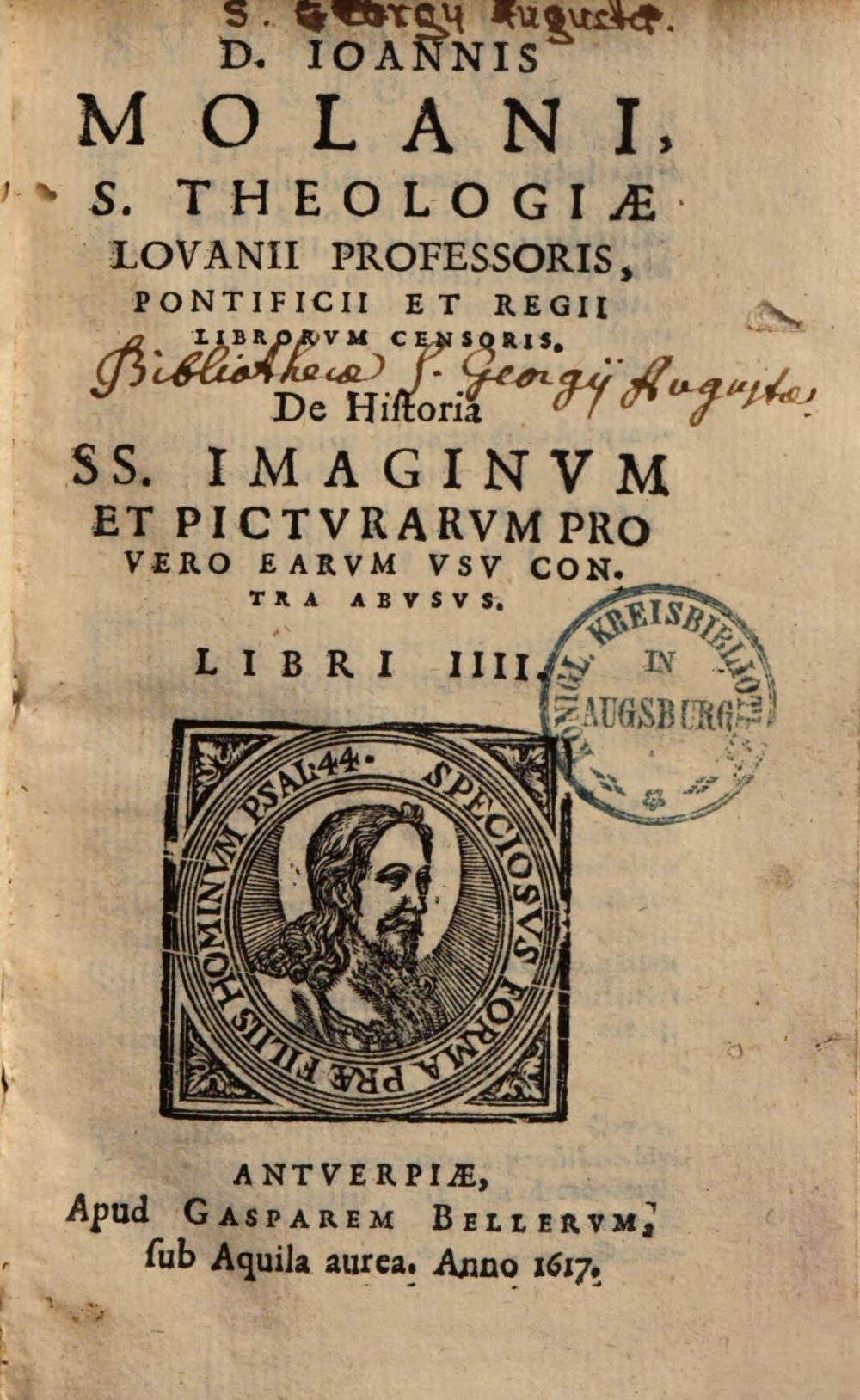
Augsburg, Staats- und Stadtbibliothek — Th H 1475. Digital Reproduction: München, Bayerische Staatsbibliothek, 2015.
Molanus discusses the conflicts between the written sources and the tradition in painting regarding the exterior features of St. Paul, in this case the pictorial tradition should prevail.
“The same Callistus described Peter and Paul, princes of the Apostles, in chapter 27 of book II. However, for my part, I would give more credit to our traditional paintings than to a text of Nicephorus. To cite an example from it, how and why does he deviate from the painting of the Apostle Paul, when he reports that his body was small, curved and almost bent, and his head small.”
“Idem Callistus Principium Apostolorum Petri et Paulu staturam et formam describit libro secundo capite vigesimo septimo. Quamquam ego longe plus tribuam traditis nobis picturis, quam verbis Nicephori. Quale enim est (ut reliqua omittam) et quantum passim ab Apostoli Pauli pictura dissidet quod referat eum fuisse corpore patuo, contracto et quasi incurvo et capite modico?”
Molanus 1996, 288.



